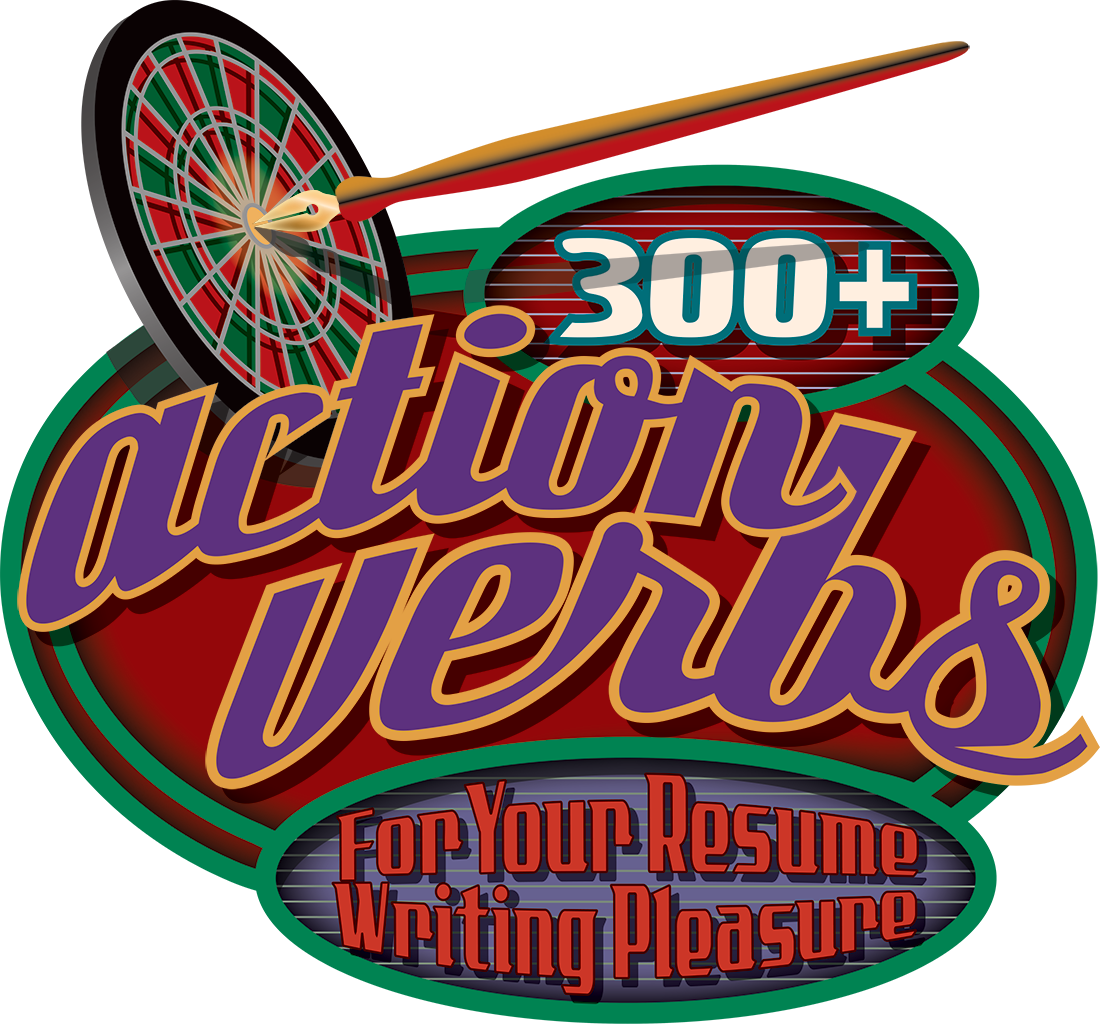Action verbs play a very important role in effectively presenting activities on a resume or in a cover letter. When used to describe academic pursuits, occupations, accomplishments, skills, knowhow, interpersonal experience, and interests; action verbs add clarity and interest to items listed on a resume. Additionally, an effective choice of action words can eliminate wordiness from activity descriptions, thus making a resume more efficient.
 |
| © 2014 Don Arday. |
Example 1:Without action verb: Was responsible for forming groups of incoming students for activities and exercises during freshman orientation. With action verb:
Grouped incoming freshman for orientation activities and exercises.
Example 2:
Without action verb:
Had authority over a team of employees who were tasked with producing creative concepts for clients.
With action verb:
Managed concept production of company creative team for clients.
The verbs below are arranged into skill categories relevant to types of job descriptions that pertain to careers in illustration. Some words are applicable to more than one category.
Management/Leadership Skills
Achieved, administered, arranged, articulated, assigned, attained, authored, chaired, competed, conceived, conducted, contracted, convened, coordinated, created, delegated, designed, developed, directed, earned, effected, employed, executed, facilitated, influenced, initiated, instituted, instructed, intervened, invented, investigated, managed, mastered, modeled, organized, oversaw, planned, presented, presided, protected, recommended, regulated, represented, resolved, shaped, solved, specified, succeeded, supervised, visualized
Research/Writing Skills
Analyzed, annotated, appraised, assessed, authored, briefed, calculated, catalogued, categorized, charted, coded, collected, compared, compiled, composed, computed, conducted, consolidated, contacted, corresponded, created, critiqued, defined, derived, designed, determined, developed, devised, diagnosed, directed, discovered, dispensed, displayed, distributed, drafted, edited, elicited, estimated, evaluated, examined, exhibited, expanded, experimented, explored, forecasted, formulated, identified, illustrated, inquired, inspected, interpreted, interviewed, inventoried, investigated, measured, modeled, observed, outlined, predicted, presented, processed, produced, published, questioned, recorded, regulated, reported, reproduced, researched, reviewed, revised, rewrote, searched, solicited, solved, studied, summarized, surveyed, synthesized, tested
Teamwork/Interpersonal Skills
Articulated, arranged, briefed, clarified, collaborated, communicated, competed, confronted, contacted, convened, coordinated, delegated, elicited, employed, encouraged, endured, enlisted, exchanged, explained, facilitated, fostered, influenced, initiated, inquired, instructed, interpreted, intervened, interviewed, introduced, listened, mediated, motivated, negotiated, participated, represented, resolved, responded, shaped, shared, solicited, supported
Financial/Technical Skills
Acquired, activated, administered, analyzed, applied, assessed, briefed, calculated, catalogued, categorized, channeled, coded, compiled, computed, conducted, defined, delivered, derived, designed, developed, devised, drafted, formulated, implemented, inspected, installed, mastered, monitored, operated, processed, programmed, protected, provided, published, recorded, regulated, repaired, reported, reproduced, responded, searched, shared, simulated, solved, supported, systematized, tested, trained, translated, tutored, updated, wrote
Teaching/Training Skills
Adapted, advised, assigned, coached, collaborated, communicated, conducted, counseled, critiqued, demonstrated, designed, developed, directed, educated, encouraged, evaluated, examined, facilitated, guided, implemented, imposed, influenced, informed, inquired, instilled, instituted, instructed, introduced, investigated, judged, lectured, modeled, monitored, motivated, organized, outlined, oversaw, participated, performed, persuaded, planned, prepared, prescribed, presented, programmed, questioned, reported, researched, responded, reviewed, revised, rewrote, scheduled, schooled, studied, supervised, taught, trained, tutored
Sales/Public Relations Skills
Articulated, communicated, contacted, convened, corresponded, delivered, demonstrated, developed, dispensed, displayed, earned, elicited, encouraged, entertained, exhibited, expanded, facilitated, formulated, increased, influenced, informed, introduced, inventoried, listened, located, maintained, marketed, motivated, persuaded, promoted, publicized, purchased, recommended, recruited, represented, responded, routed, scheduled, shaped, shared, solicited, sought, stimulated, succeeded, suggested, supported, surveyed, targeted
Organizational/Detail Skills
Administered, arranged, assembled, briefed, catalogued, categorized, coded, collected, compiled, contacted, coordinated, corresponded, distributed, edited, executed, grouped, identified, inventoried, located, monitored, regulated, responded, retrieved, scheduled, summarized, supported, systematized, updated, verified





